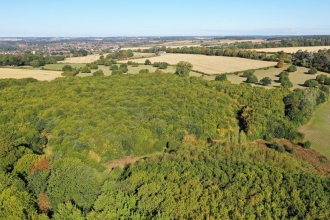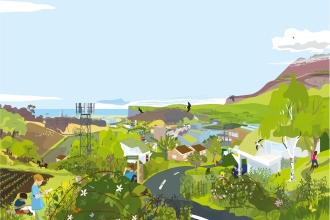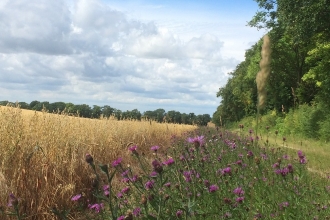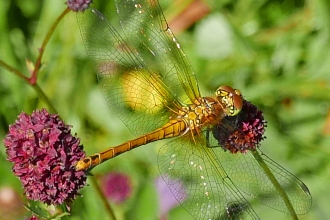People often suggest that development, whether it’s houses, warehousing, shopping or factories, should be built on ‘brownfield sites’ and not encroach on ‘greenfield sites’. But it’s more complicated than it seems.
'Brownfield site'
The term makes it sound dull, dirty and unappealing. Its short definition as ‘previously developed land’ suggests derelict buildings, broken concrete, somewhere unsafe and ugly, certainly not a wildlife haven.
Unfortunately, the term also encompasses sand and gravel pits, chalk and limestone quarries, and wartime airfields (which are often 90% species-rich grassland), all of which have been classed as ‘brownfield’. These places include some brilliant local nature reserves and wildlife sites.
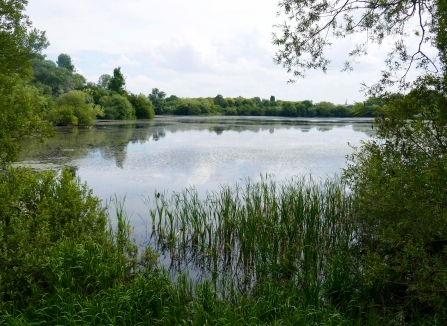
Nene Wetlands by Caroline Fitton
- The Nene Wetlands (pictured) are gravel pits, internationally recognised for the wintering and breeding birds.
- Cherry Hinton Chalk Pits are among the best sites in the country for rare plants such as Moon Carrot, and the best place locally to see glow-worms.
- Totternhoe Quarry has thriving populations of Duke of Burgundy and Small Blue butterflies, rare orchids, breeding Corn Buntings and much else.
- Houghton Regis chalk quarry has among the largest populations of Chiltern gentian in the country, and over 10,000 Chalkhill blue butterflies.
- Stonepit Close at Old Sulehay has Dingy and Grizzled skippers, the scarce small-flowered buttercup and deadly nightshade, and masses of wild roses brilliant for warblers in summer and visiting fieldfares and redwings in winter.
- One disused airfield in Northants has breeding nightingales and many scarce insects
- In north Cambridgeshire, silt lagoons from vegetable washing now have breeding marsh harriers and bitterns, and dozens of rare insect species.
Wildlife isn’t always choosy about what it lives on. There are places where tens of thousands of marsh orchids grow on fuel ash from power stations, and rare beetles, bees, breeding avocets and short-eared owls thrive in sludge lagoons. Some post-industrial landscapes in the Thames gateway are now recognised as among the most important places in the country for rare insects.
‘Greenfield site’
This term sounds lush, rural and appealing. But it includes 200-acre fields of oilseed rape and winter wheat with not a hedgerow or tree in sight, which are sprayed with herbicides, insecticides and fungicides - and treated with industrial fertilisers - several times a year. Intensive farmland may have far less wildlife than a suburban garden, let alone a gravel pit, quarry or post-industrial site.
Sadly, in Beds, Cambs and Northants, any wildlife rich 'greenfield' as does remain has often been reduced to tiny fragments in the intensively managed landscapes of the three counties.
We do have quite a bit of grassland in some parts but, just like the arable crops, its wildlife is very limited due to overuse of fertilisers and constant 're-seeding' of a limited number of grass species, which crowds out the diverse range of grassland species that support more wildlife.
Working for wildlife
The Wildlife Trust treats every site on its wildlife merits. We rely on science, surveys and detailed records. We defend and protect places that offer the most for wildlife.

